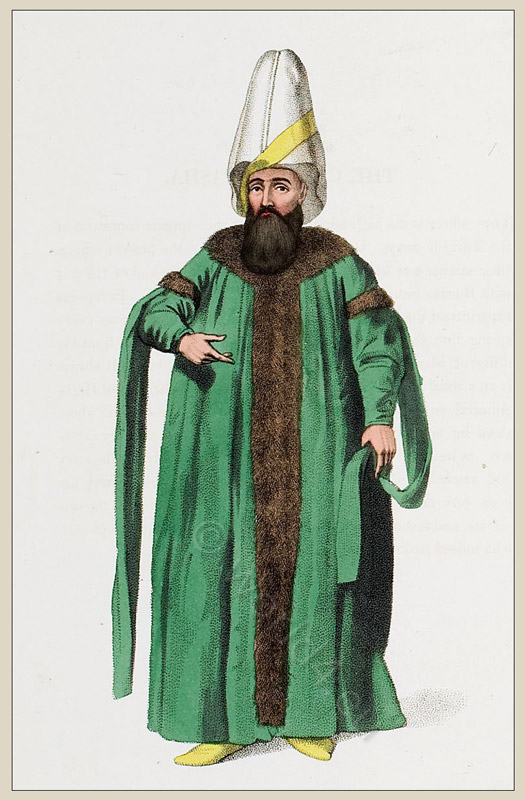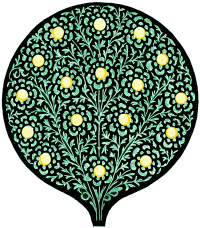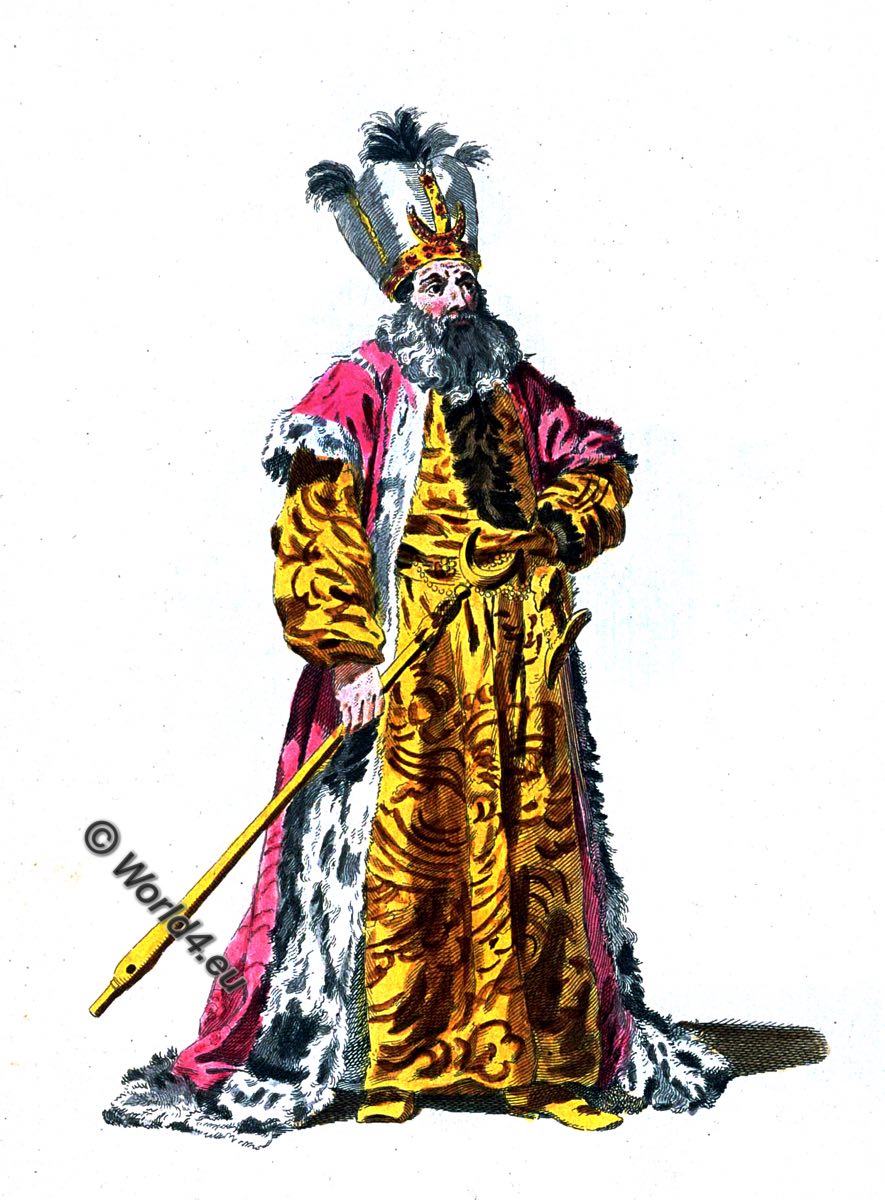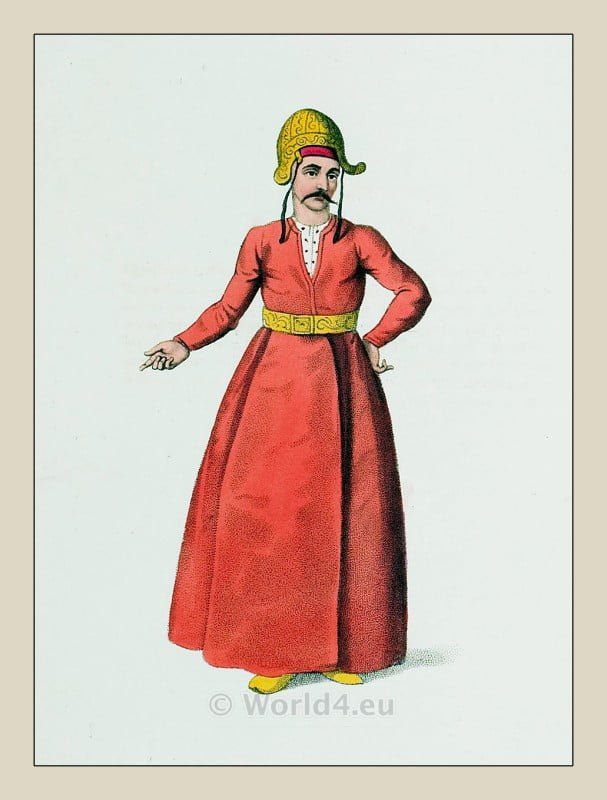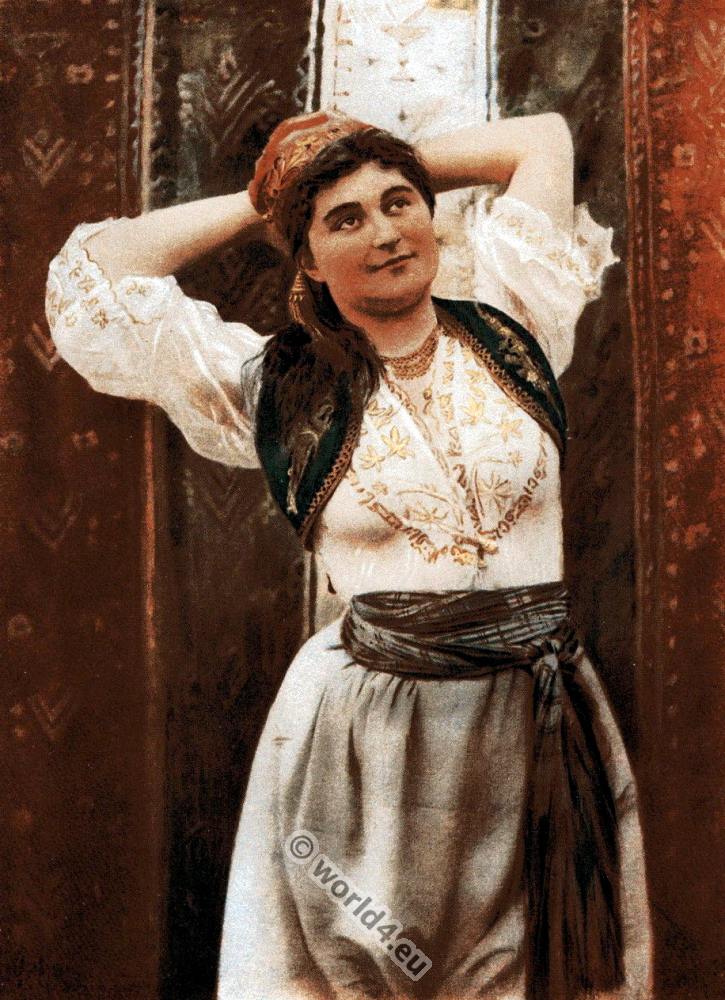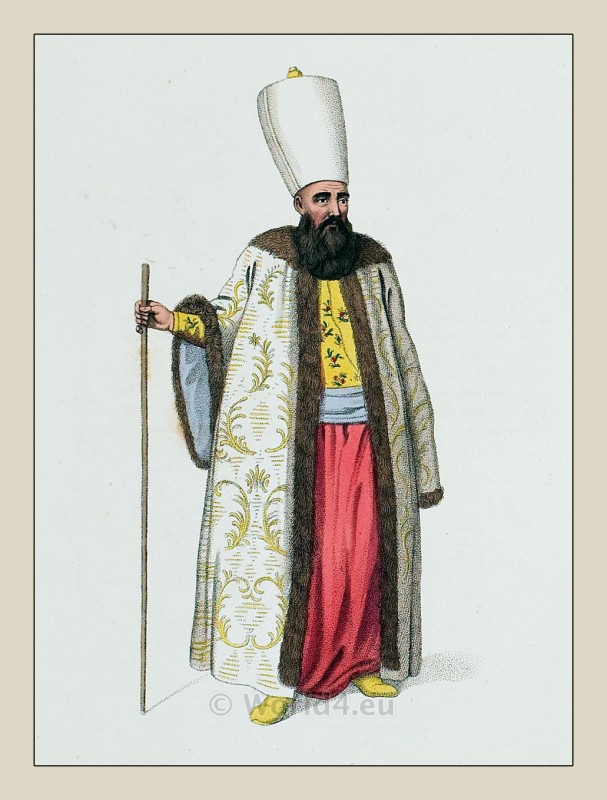The Capitan Pasha “Captain of the Sea”. Admiral of the Ottoman Empire navy.
Kaptan Pasha (Ottoman قاپودان پاشا; also Kaptanpaşa / کاپیتان پاشا; Kapudan i Derya / قاپودان دریا Kaptan-i Derya / کاپیتان دریا) was the highest military rank of the Ottoman Navy.
THIS officer is the high-admiral, and has the supreme command of the Turkish navy. Until the appointment of the present officer, their marine was in a most wretched state from the end of the war with Russia, but has lately been very much improved. Europeans superintend the building of ships.
The Capitan Pasha goes every spring into the Archipelago to receive the capitation-tax from the different islands, and to free the sea from pirates, but as it always is on a fixed day, the latter part is quite useless.
The present High Admiral enjoys the unbounded confidence of the Sultan, whose slave he originally was. His authority and power are very extensive, as he has the appointment of every thing relative to the navy and arsenals. And under his management the Turkish navy has been very much improved.
The Turks, however, dislike the seaservice, and therefore as many Greeks as they can get are employed, who indeed make better sailors.
Source: The costume of Turkey. Ottoman Empire. Officials and ethnic groups. Illustrated by a series of engravings; with descriptions in english by Octavian Dalvimart. The text has been attributed to William Alexander, B. De Tott, J. Dallaway, G.A. Olivier, M. Montague.
Related
- The people and scenery of Turkey.
- David Roberts. The Holy Land, Syria, Idumea, Arabia, Egypt, & Nubia.
- Costumes and scenery of Afghanistan.
- India. The Mughal Empire.
- The Oriental Album by Prisse d’Avennes. In The Valley Of The Nile.
- Gardens of the Dal Lake at Srinagar in Kashmir.
- Asia costumes by Auguste Wahlen. Based on authentic documents.
- Historical Asian Costumes of Java, Japan and Indonesia.
- The varied and picturesque costumes worn by Natives of India.
- Views of Darjeeling: With typical native portraits and groups.
- Romanian Folk Costumes. Hairstyle and Headdresses.
Discover more from World4 Costume Culture History
Subscribe to get the latest posts sent to your email.

